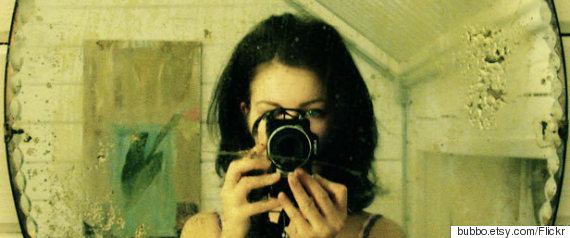
When my debut novel, Stay, came out in 2002 I was elated, although it quickly became apparent that I'd made the classic rookie-author mistake: I'd built the fictional world around a protagonist who looked a bit too much like me and I'd used a few too many biographical markers--allusions to my old home town; a restaurant like the one I'd worked at in Dublin; the first names of people I knew. This meant that a lot of my readers (and some of my friends) assumed that much of what happened in the novel was true. Sure, my character Abbey was a Canadian living in Ireland (much like I had been at her age), sure she spent time in pubs that were a near-perfect match for the ones I'd frequented but, I'd insisted, the similarities ended there. This insistence ran aground one night at a literary reading for said novel when, mid-way through a paragraph, I realized that the skirt I was describing Abbey as wearing ("an orange-and-brown flowered skirt") was, in fact, the exact same skirt I was wearing on stage. And the skirt was only the beginning: it turned out that all those years while I'd been diligently working on plot and character arc and the other details of world making, a whole host of material objects from my life had slipped into the novel unnoticed. This is one of the wonderful features of the imagination: it's sly. Writers tend to think of it as a dutiful servant opening the shutters onto a clear and unformed terrain, but really the imaginative faculty tends to work more like a pickpocket--nimbly lifting one thing after another from the already-existing world in order to stock one's fictional shelves.
When I was writing my new novel, The World Before Us, this sort of slippage happened again even though I was trying to guard against it--I set my protagonist Jane up in a London flat that has a kitchen the same yellow as my kitchen here in Canada, and I gave her a spaniel called "Sam" who is a doppelganger for our spaniel-cross "Fiddler" who died almost a decade ago. The fictional museum Jane works at in the novel is host to an array of objects I borrowed from real-world museums: a cabinet of hummingbirds (imported from The Natural History Museum in London), a collection of glass-blown botanical models made by the Blashka Brothers (stolen--imaginatively--from a display at the National Gallery of Scotland), wallpaper I photographed in a great house near York, a teacup that was my grandmother's.
Objects in this way can sometimes have a double-life: there in the orbit of the author's real world one day and transported into a fictional world the next. This is one of the wonders of mimetic art: "things" can have parallel lives, or an infinite number of lives. In books they can be picked up and put down, treasured, destroyed, or modified. In The World Before Us,I gave Jane my grandmother's teacup because it was at hand in my imagination (much like my skirt was in Stay) and because one day, in real life, I broke the teacup and was upset by it. Putting the teacup in the novel (in the form of one once used by Queen Victoria and which Jane breaks) was a way of preserving it in my memory, as well as a way of allowing readers to see it as Jane turned it over in her hands.
As a writer and a reader, I often marvel at the fact that a handful of sentences can form a vivid image in a reader's mind. The Classical argument (from Aristotle)-the argument my story suggests-holds that art imitates life: that the author of a novel, for example, sees something in the world and reproduces it in a book for their reader's enjoyment. In the late 19th century Oscar Wilde challenged this presumption by suggesting the opposite: that life imitates art--that we see things like fog or a rain-swept moor as beautiful because art and literature have taught us to do so; that maybe we see a teacup or a hummingbird cabinet a different way because of how it was treated in a novel. Both of these arguments are compelling but both treat art and life as oppositional, which says, to me anyway, that neither case is wholly right. I understand the legal reasons behind the common disclaimer in fictional works: that "any resemblance to actual events, locales, persons, living or dead is coincidental" but something about this claim has always bothered me--how it presupposes an aloofness--as if the world doesn't slip constantly into the writer's pocket even as said writer's ideas are being set loose upon the world. The way I see it, art draws from life just as life draws from art, although the degree to which this occurs will vary from individual to individual.
I have, over the years of my writing life, carried a stranger's smile with me for weeks, or a snippet of dialogue; I've given a character my birthmark, lent them my clothes and my furniture, used the birds' nest my real-life dog sniffed out in a park as an ornament in my protagonist's home--I've imported whole weeks worth of real world weather into stories I've made up. This is not art imitating life, it is more akin to an imagination that takes all comers, that says there is nothing wrong with the way the world piggybacks onto the imagination or how the imagination runs off with the world. If the runaway success of Karl Ove Knausgaard's My Struggle has taught us anything it's that the lines between art and life are blurry and that we as readers are interested in what that in-between terrain contains: glimpses of things we remember in a world built by the stories we tell ourselves.
Aislinn Hunter is the author of The World Before Us.